As I’ve said before, there is a travel card in Denmark (rejsekort) which is fantastic, but on the other hand they often seem to lack information there. For instance, on the day when I headed for the small town of Rungsted.
Earlier, at Copenhagen’s railway station information office, I had already obtained a map of suburban railway and underground lines in and around the city I guess in order to find my way around. Thus I knew I should catch a train in the direction of Helsingør. However, before boarding the train I realised from some poster on the station that at that time of the day the Helsingør trains did not make a stop at the station I needed! To cut the long story short, thanks only to pure improvisation and I guess the travelling experience, as a total guess-work and moving with no clear idea, I changed the train along the way realising that I had actually missed the right train back in Copenhagen because nobody bothered to display the information on the subject.
I have to admit that I found this very odd in Denmark, this complete lack of information (there was nobody there to ask and the posters on the station at which I decided to change the trains had no other information except those referring to Helsingør). The information about the stops and the arrival/departure times exist though, but on the trains themselves, displayed by a moving text! This was certainly not the first time for me to use trains on my travels, and I’m thinking here primarily of Western Europe, so I found all of this quite weird. At most of the train stations there is nobody who works for the railways and whom one can ask something, and there are also no posters with details of the arrivals and departures of trains (like, e.g., in Italy).
I presume that the main reason for all of this is the modern development of technology. It is presumed that everybody has smart phones (Danish ones) and therefore they have an internet connection all the time, so it is enough to download an application. If your mobile is roaming, then you are stuck and with no information whatsoever.
On the other hand, because of these issues with maps and transportation, I got an impression that the Danes are somehow not interested in independent tourists like me. It happened, for instance, in a couple of places that there were information about where, let’s say, the visitor’s centre was and it was even nicely marked on the map displayed by the local authority. Then you come to the place and find a closed door with a note that the office has been closed and that you need to go to a completely different place which, by the rule, is farther away from the centre.
Well, ok. This independent traveller managed to find her way around, including also on this day. After the initial troubles, I finally reached Rungsted and there to my surprise I found the signs from the very railway station. The signs pointed towards the Karen Blixen Museum. For those who are not familiar with the name, Karen Blixen was a Danish writer from the 20th century who is probably best known to the wider audience by the film made after her autobiographical novel “Out of Africa.” By the way, she achieved her first literary success in America using a pseudonym Isak Denisen. I must admit that I have never actually read her work, but as an incurable romantic soul I must have watched the film at least a dozen times, so it was Meryl Streep and Robert Redford who actually inspired me to come here. But not only them, also John Barry. Now you are probably asking who this is. Well, this is the composer. He is interesting not only because he composed the music for the film “Out of Africa,” but probably even more so for composing the music for as many as 11 films about James Bond, while he also did the arrangement for the famous introductory theme song from the Bond movies! Still, it is precisely the music from “Out of Africa” that I find to be one of the most beautiful film music (John Barry got an Oscar for Best Original Score precisely for this film). Have a listen to the central melody: https://www.youtube.com/watch?v=772MTLJZUp0
Although the “music” story above has realistically nothing to do with my travelling around Denmark, it is still indirectly linked to my destination of the day, so I believe it is quite all right that I put it in.
So, one can reach the Karen Blixen Museum also following a path that leads through a forest belonging to the foundation. Namely, after her death, the entire estate was turned into the Rungstedlung Foundation which among other things provides a bird sanctuary on the property. Also, the grave of Karen Blixen is located under a beech tree in that forest.
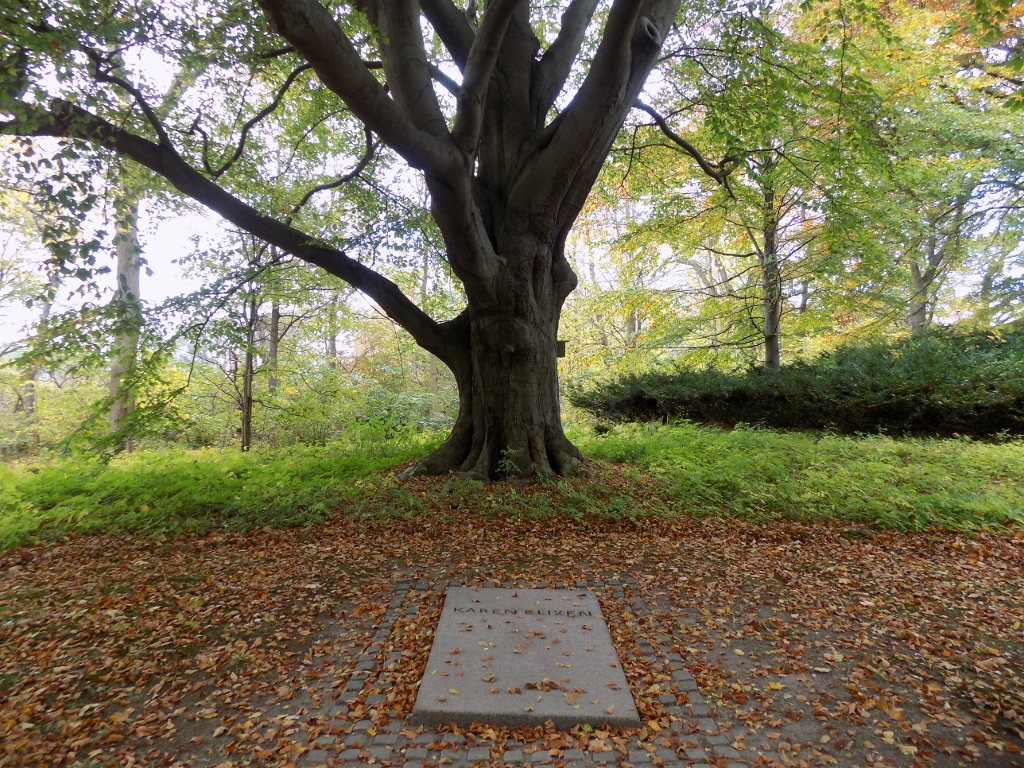 Karen Blixen’s grave
Karen Blixen’s grave
The museum itself is actually rather small and this used to be the house of the Dinesen family, which is the maiden name of Karen Blixen. Her siblings gave their shares of the inheritance in order for the property to stay intact and be able to function as a unique foundation.
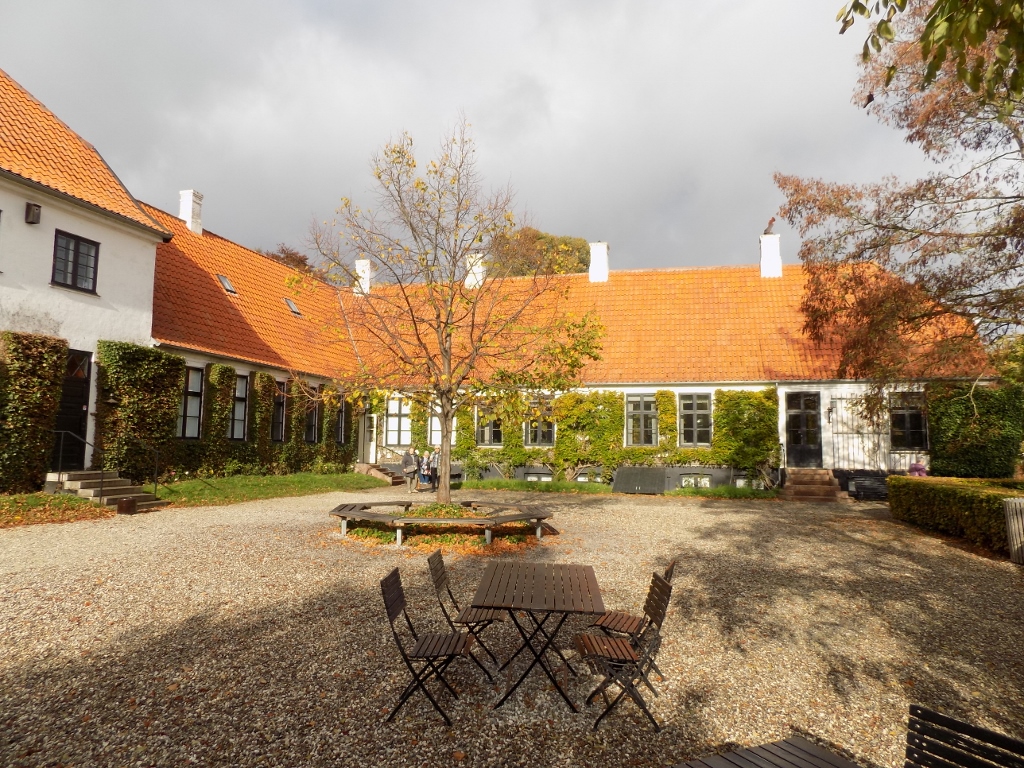 Karen Blixen Museum
Karen Blixen Museum
To start with, people are allowed in every half an hour and first they get cotton shoe covers in order not to dirty the floors and then somebody from the employees tells them some interesting things linked to the writer, her life and the museum itself.
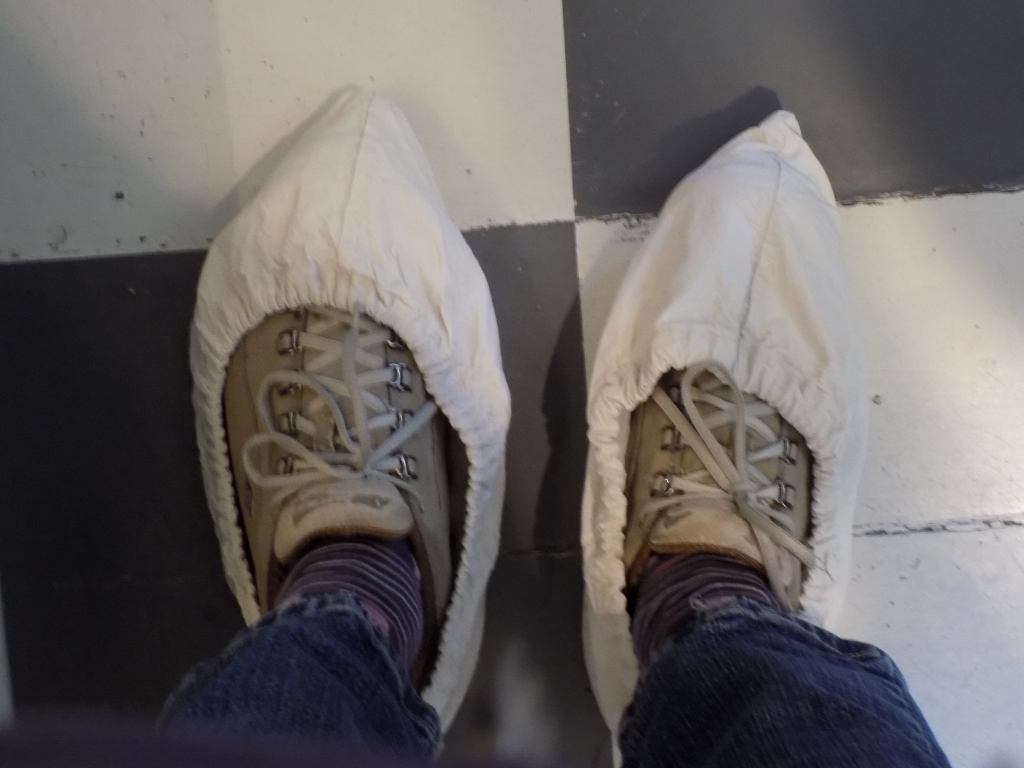 Well, now I can walk around the museum
Well, now I can walk around the museum
The life of Karen Blixen was very fascinating. A part of it may be seen in the film (or read about in the book), but I was shocked when I saw her in a photo displayed at the museum with Marilyn Monroe! I simply asked myself what the two of them were doing in the same place, but then I saw the then husband of MM – Arthur Miller, the playwright, and the situation became quite clear.
So, although not too big, the museum is quite an interesting place where some additional details linked to the life of this writer may be learned.
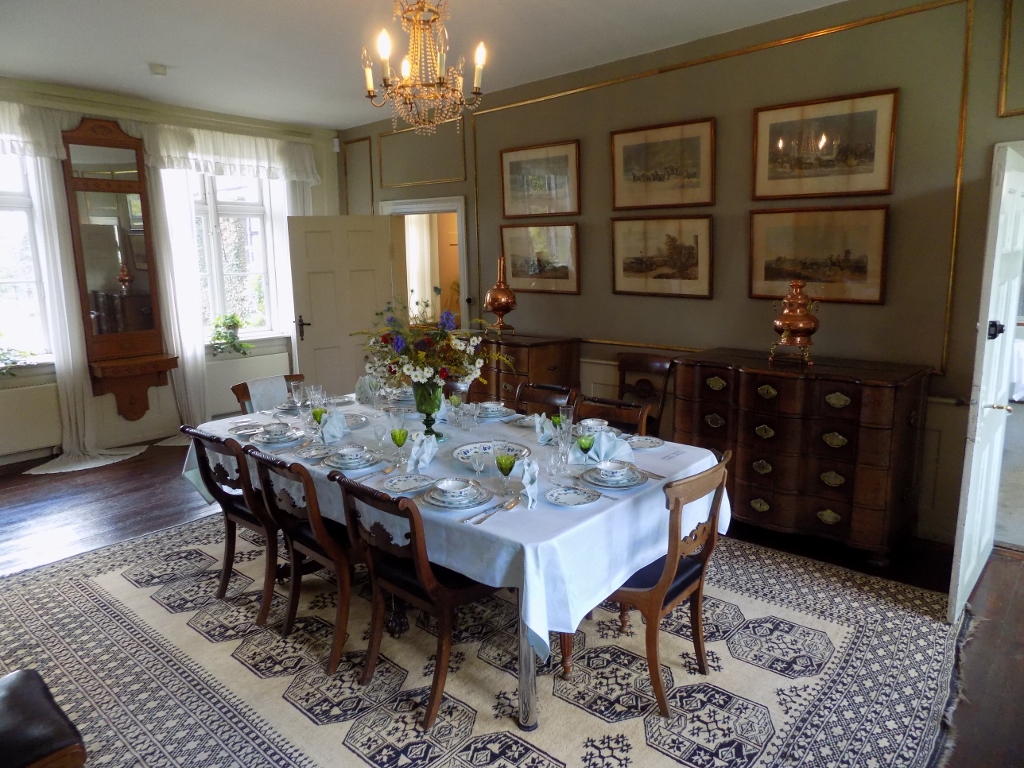 Dining-room as a part of the museum’s exhibits
Dining-room as a part of the museum’s exhibits
After the leisurely visit, I sat at the café-restaurant that belongs to the museum, had a bite and got refreshed with a nice coffee, and then I headed back through the forest again.
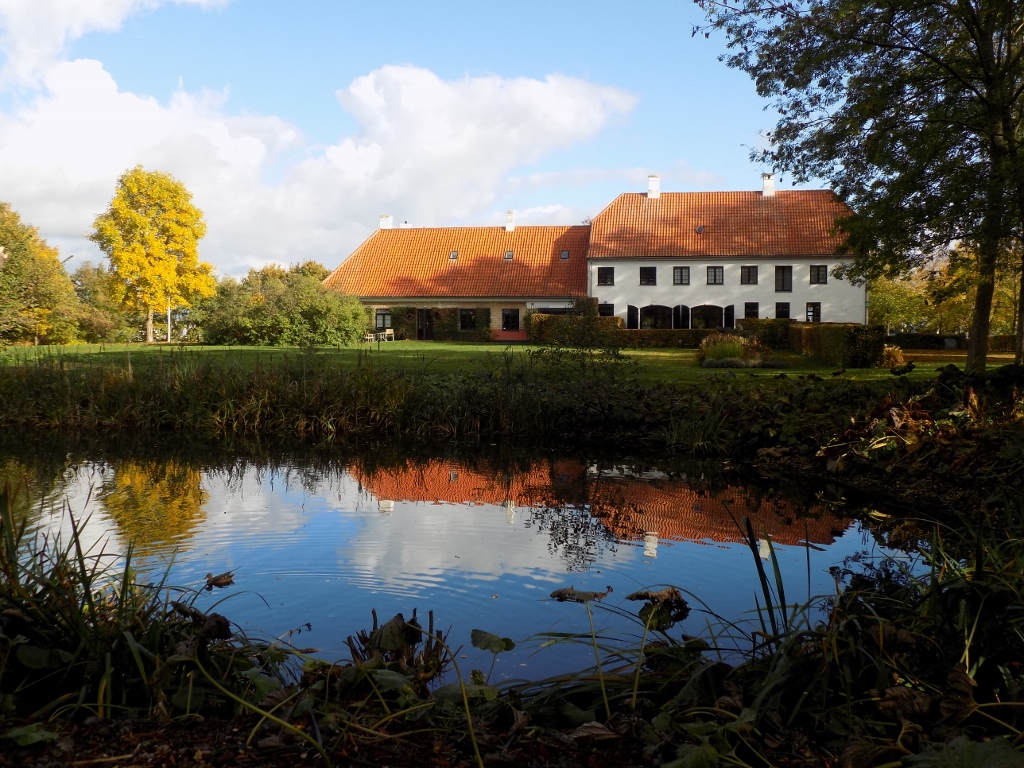 View at the pond and the back side of the Karen Blixen Museum
View at the pond and the back side of the Karen Blixen Museum
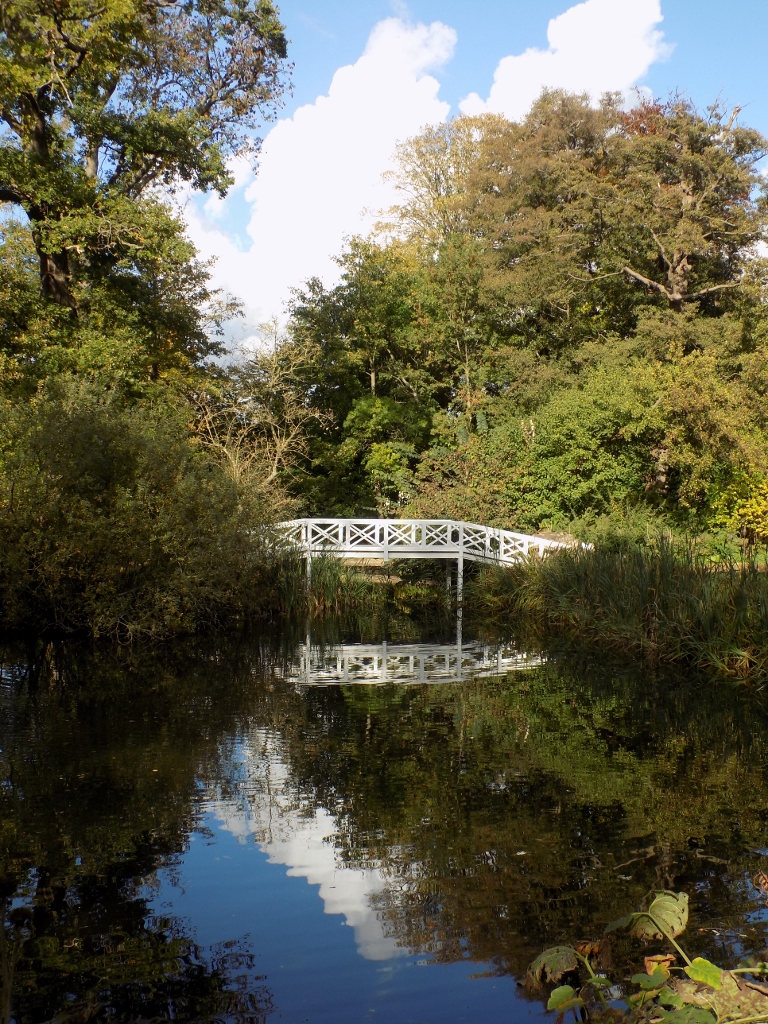 The picturesque pond and a bridge as a part of the property that belongs to the museum
The picturesque pond and a bridge as a part of the property that belongs to the museum
This time I followed another path, but that was no problem, since the estate is not too big. So, I left it soon and went to the railway station. By now I was well-versed and after a short while I was on the train to Copenhagen.
Finally, my plan included a more concentrated visit of the capital of Denmark. At the beginning of my visit to this Scandinavian country, I was thinking about visiting a couple of museums in Copenhagen, but eventually I gave up, since I did a lot of sightseeing and visits during the previous days and now I just wanted to walk around and look at some interesting places from the outside.
Thus I went to the Botanical Garden, but I actually just walked around it and then continued to the King’s Garden (Kongens Have). This is the oldest garden in Denmark that goes with a palace. It was designed back in 1606 when Rosenborg Castle was also built, during the reign of Christian IV.
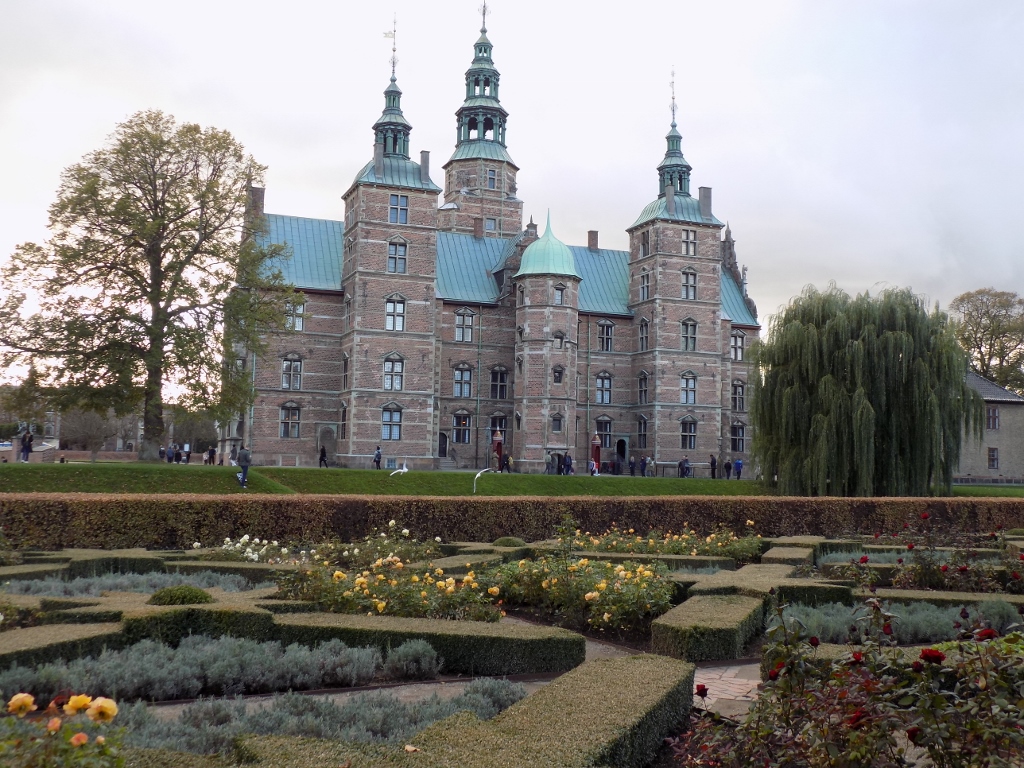 Rose garden, a part of the King’s Garden and Rosenborg Castle
Rose garden, a part of the King’s Garden and Rosenborg Castle
Rosenborg Castle nowadays houses a museum and, among other things, it is possible to see the Danish royal jewels here as well.
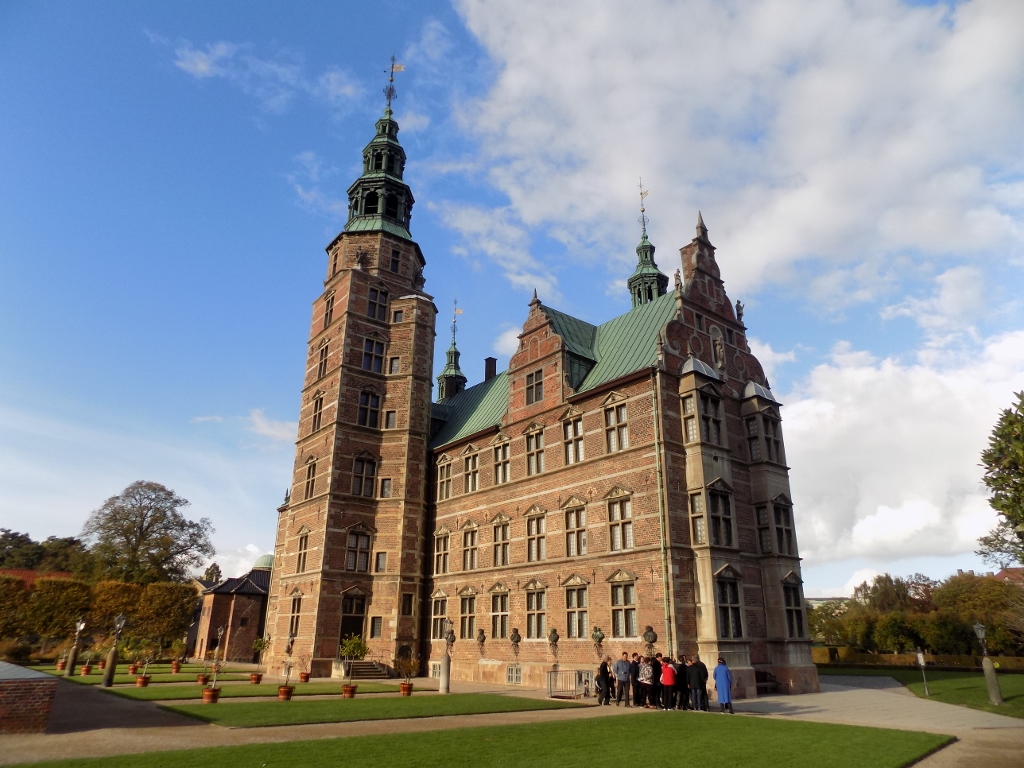 Rosenborg Castle
Rosenborg Castle
After this, I walked to the centre of the city, stayed there for a little while and then went back to the flat in Frederiksberg.
The next day, there was finally no rush and catching inter-city coaches or some other longer distance transportation. I felt very local, since I first went grocery shopping in order not to leave the fridge empty when Rade returned from his own trip, and later I caught a bus, not the one I had taken before, but another one that had a stop in another street, which additionally made me feel local – I had started to improvise. Thus I got to the centre of the city, but from the “other side.”
To start with, I wanted to go and see the monument to Bishop Absalon who is, according to the legend, the founder of Copenhagen. I must admit I don’t imagine bishops on horses, with a helmet and an axe in their hand, but the Danes certainly know why they showed him in this way.
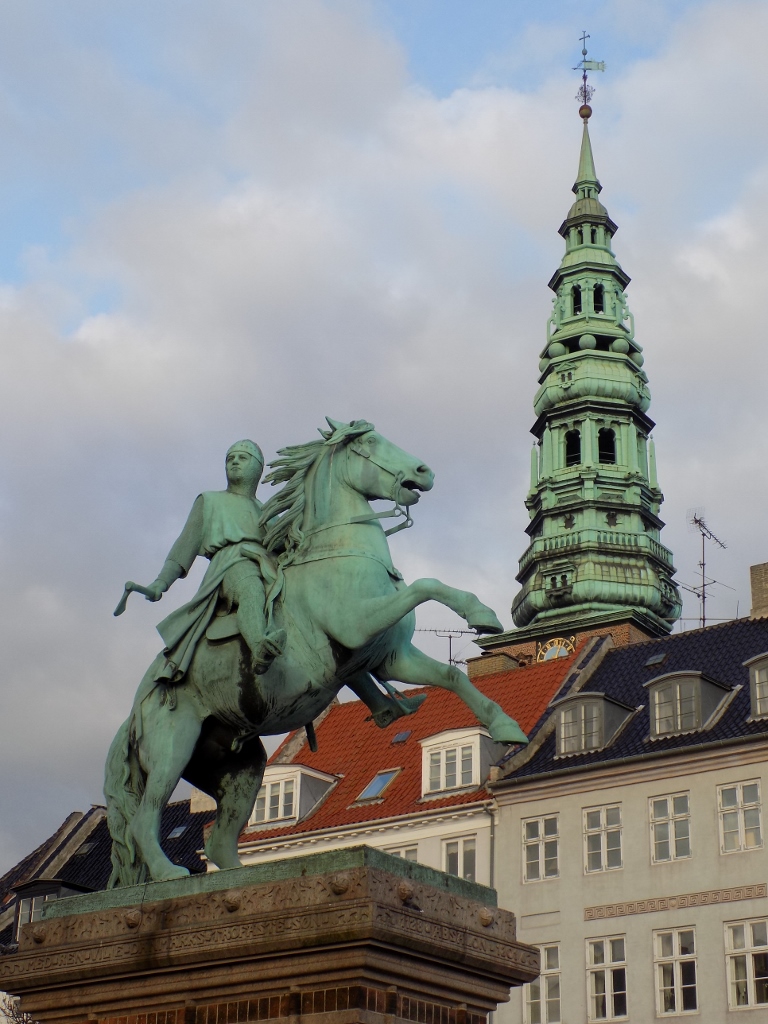 Monument to Bishop Absalon
Monument to Bishop Absalon
At the very square where the monument to Bishop Absalon is erected, there is a large parking lot for bicycles. Bicycle is exceptionally popular as a means of transportation and if you like to ride a bicycle, Denmark is the place for you. Once, when I returned to Copenhagen by an inter-city coach, I saw a young man, who came by the same coach, taking his bicycle from the luggage compartment, sitting on it and riding off.
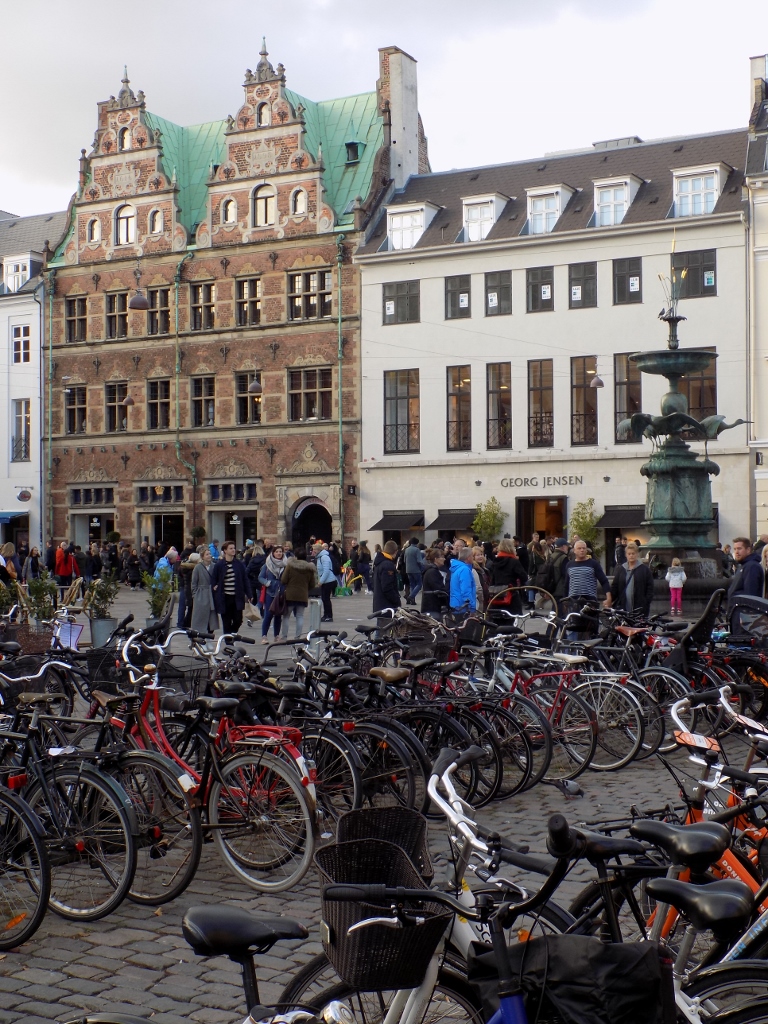 Parked bicycles in the centre of Copenhagen
Parked bicycles in the centre of Copenhagen
Then I went towards Frederik’s Church that was very nicely lit on this partially cloudy day.
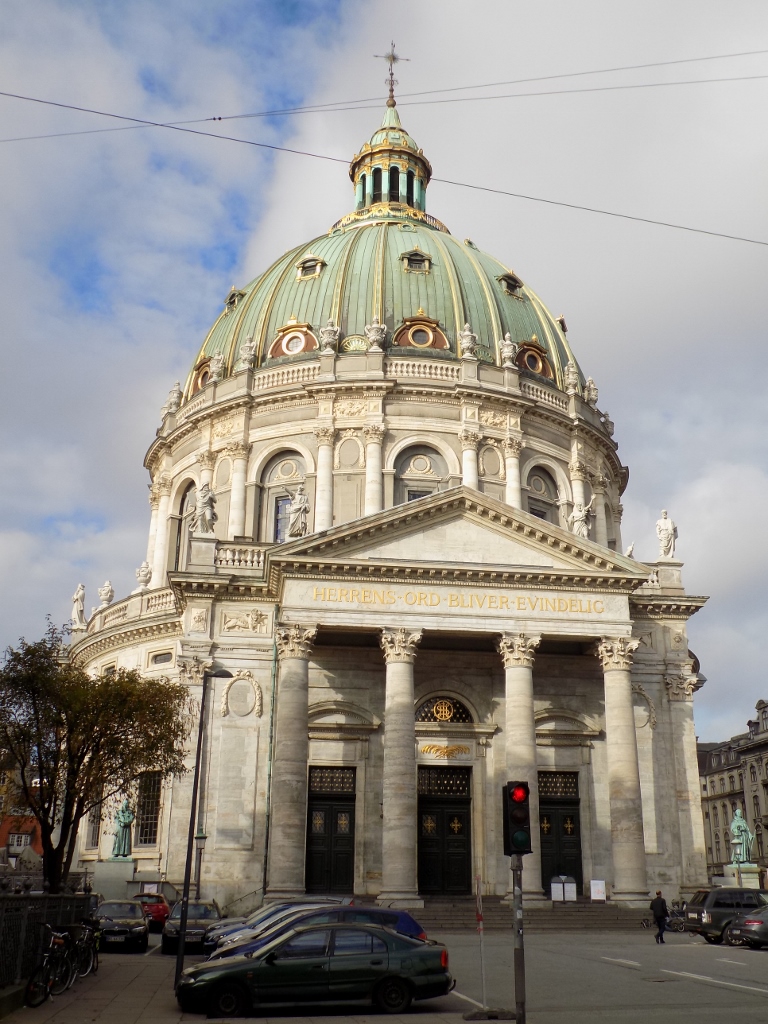 Frederik’s Church
Frederik’s Church
Directly from here, there is a street that leads towards Amalienborg, the seat of the Danish royal family. In the square there is a monument to King Frederick V on a horse, as well as different palaces that belong to this complex.
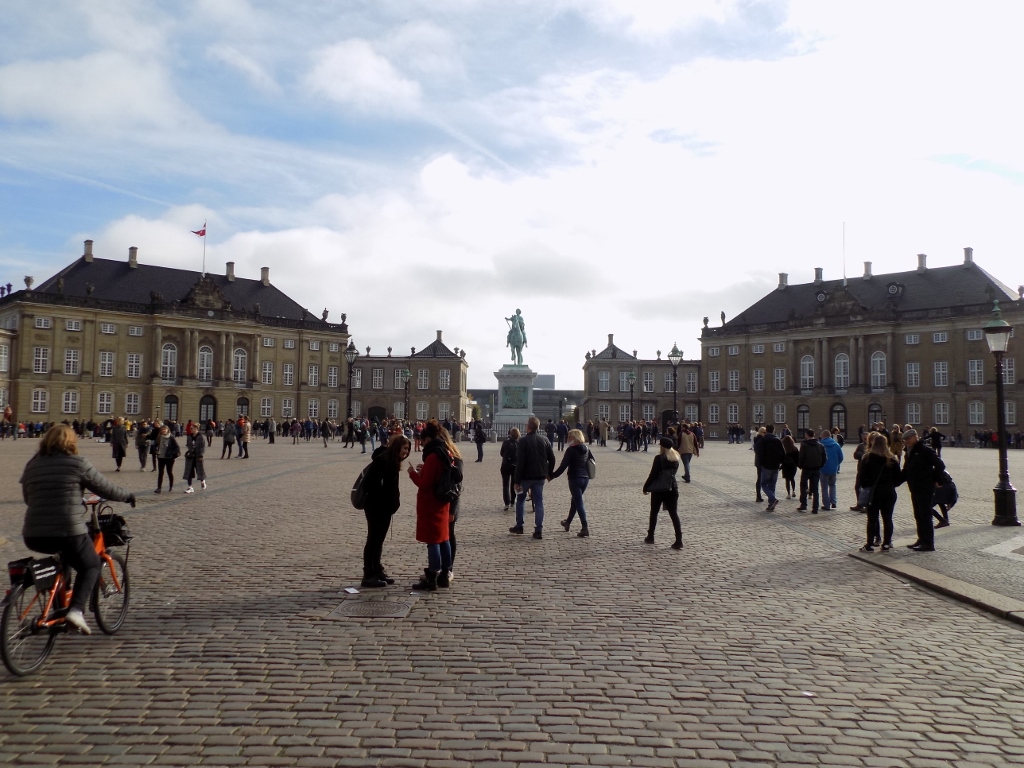 Amalienborg
Amalienborg
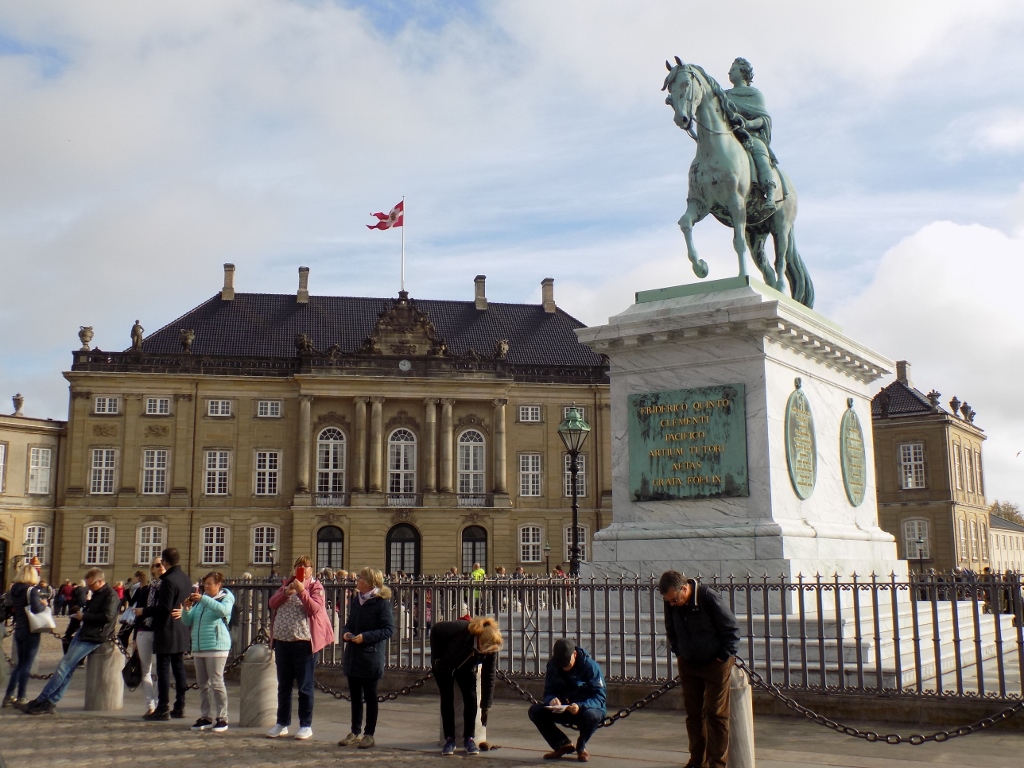 Amalienborg
Amalienborg
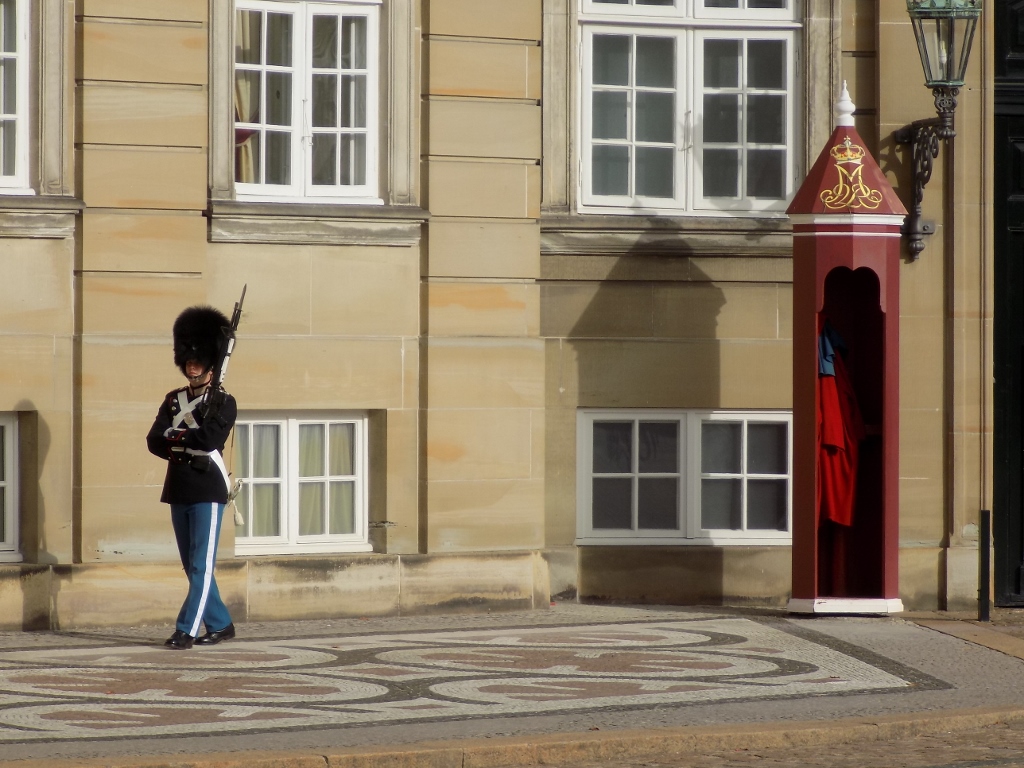 Amalienborg, a detail from the square
Amalienborg, a detail from the square
It was by coincidence that I got here right at the time of the changing of the guard, so I decided to stay here for a while and see what this looks like done in the Danish way. Simple, formal, but also taking a bit too long. Have a look...
I did not stay to the end of the changing of the guard, but rather I went to Nyhavn which was still pretty, but somewhat differently lit than the first time I saw it.
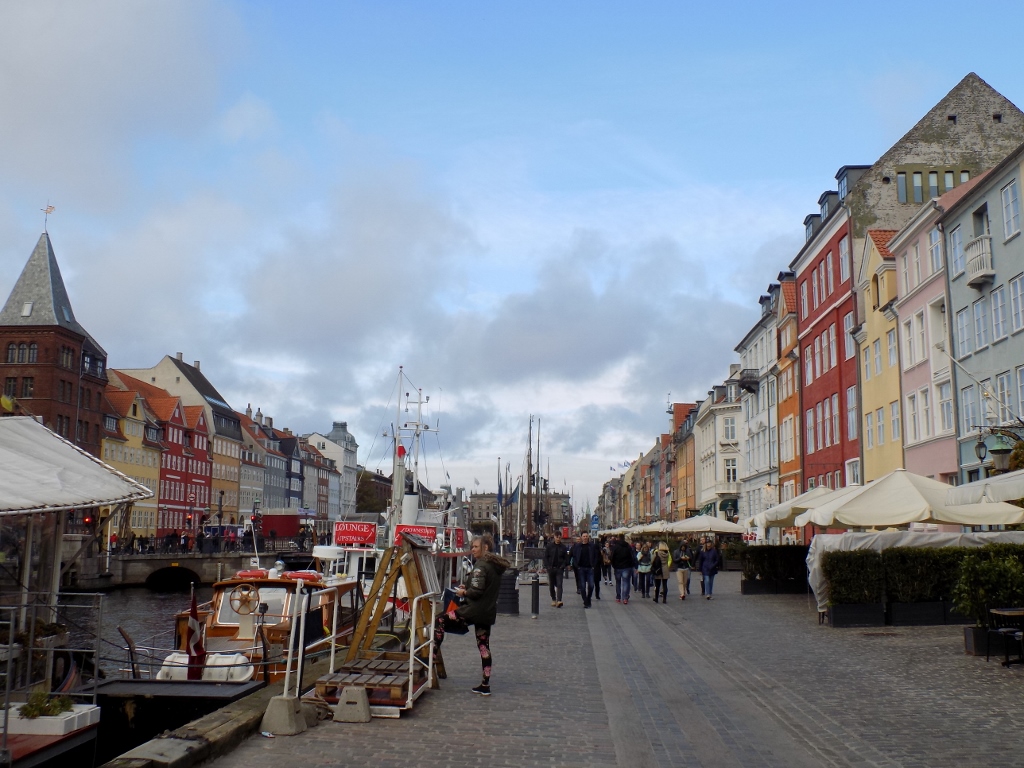 Nyhavn
Nyhavn
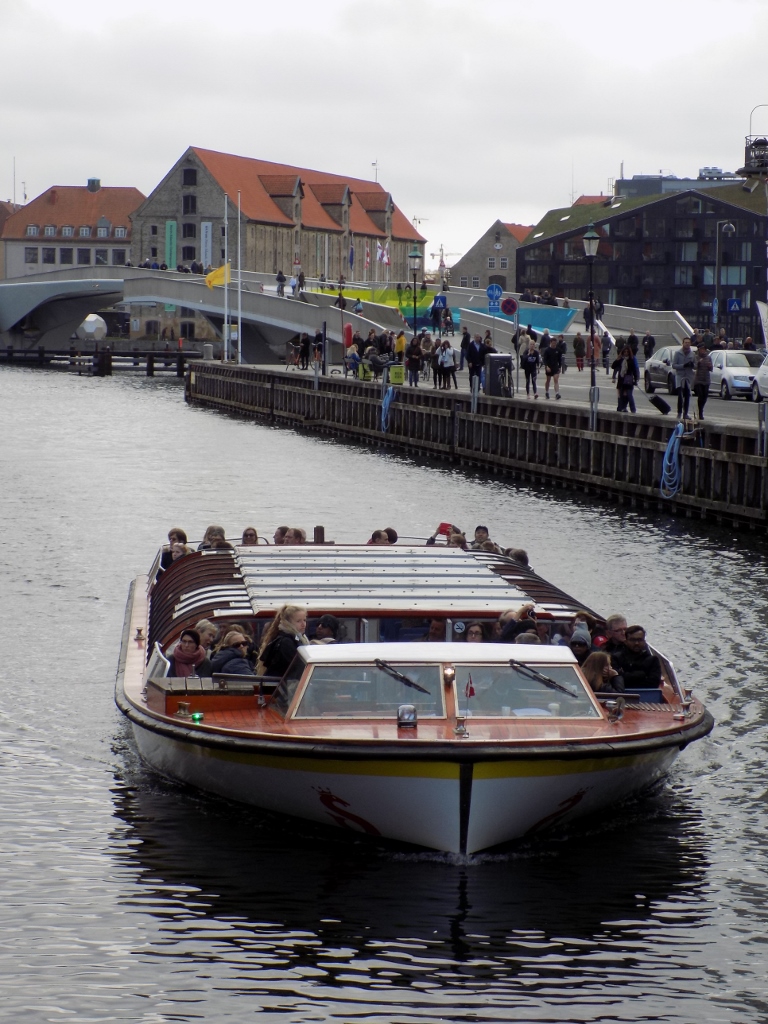 One of the numerous tourist boats in Nyhavn canal and the bicycle-pedestrian bridge farther away
One of the numerous tourist boats in Nyhavn canal and the bicycle-pedestrian bridge farther away
Using the pedestrian bridge I went to the part of the city called Christianshavn and there I walked by the canal that leads right through the middle of this city’s quarter. At one point I saw three young boys playing with swords, like real descendents of Vikings, but regardless of the presence of two adults, all three children had life-vests on.
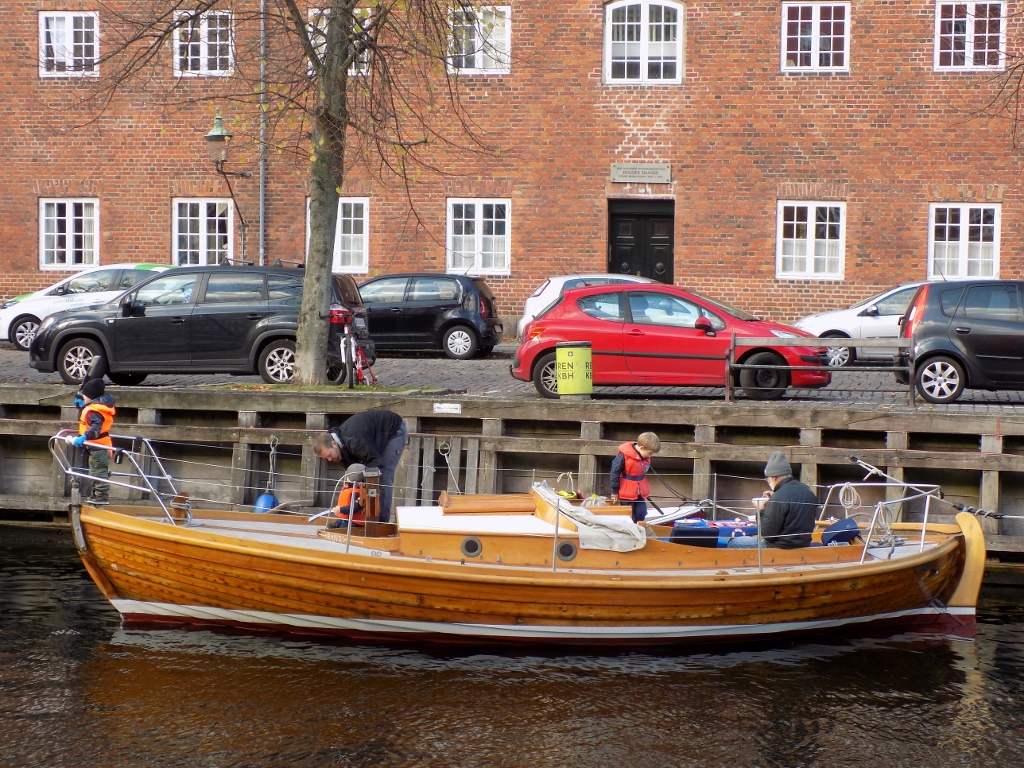 Playing is fine, but safety comes first
Playing is fine, but safety comes first
In Christianshavn, there is Our Saviour’s Church which is particularly interesting because of its unusual tower.
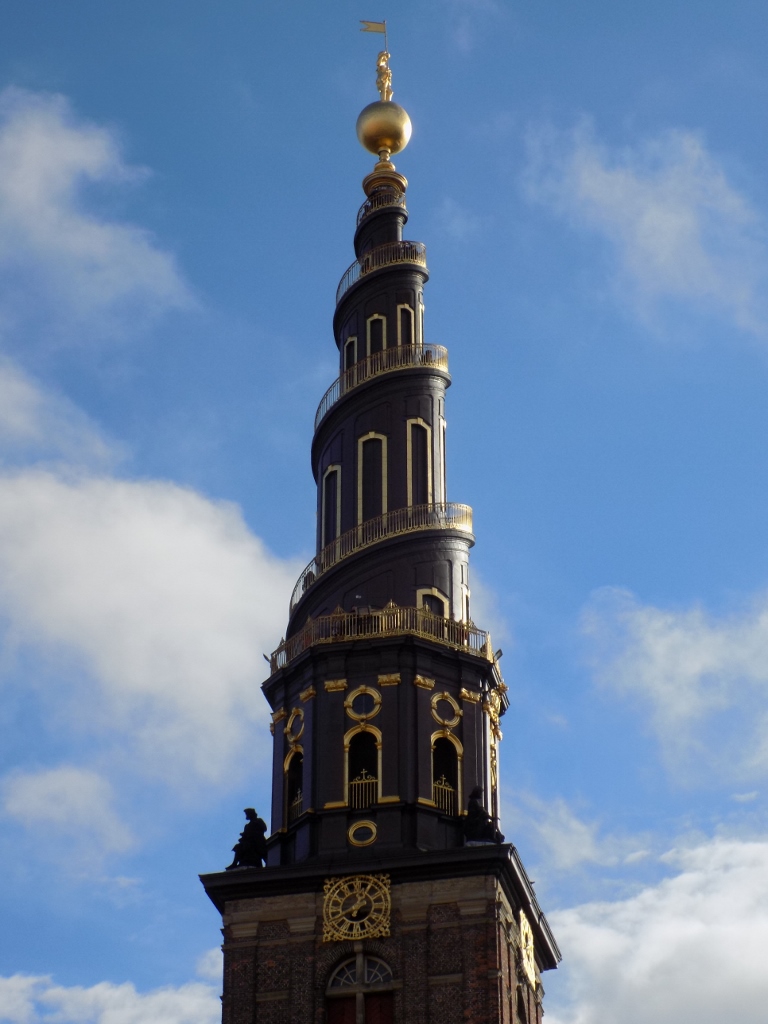 Tower of Our Saviour’s Church
Tower of Our Saviour’s Church
After this, in a broad arch I went to island Slotsholmen from where Copenhagen started to spread in the first place. There I walked over the Marble Bridge and towards Christiansborg Palace which, among other things, houses the Danish Parliament, Prime Minister’s Office and the Supreme Court of Denmark.
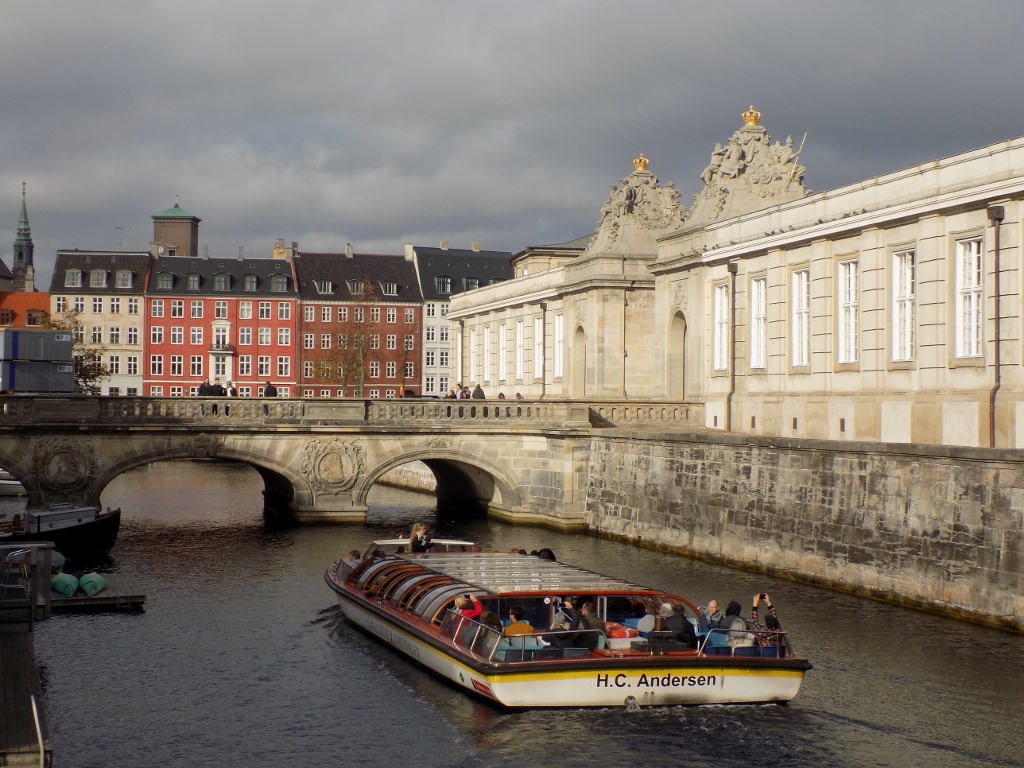 Marble bridge (Marmorbroen)
Marble bridge (Marmorbroen)
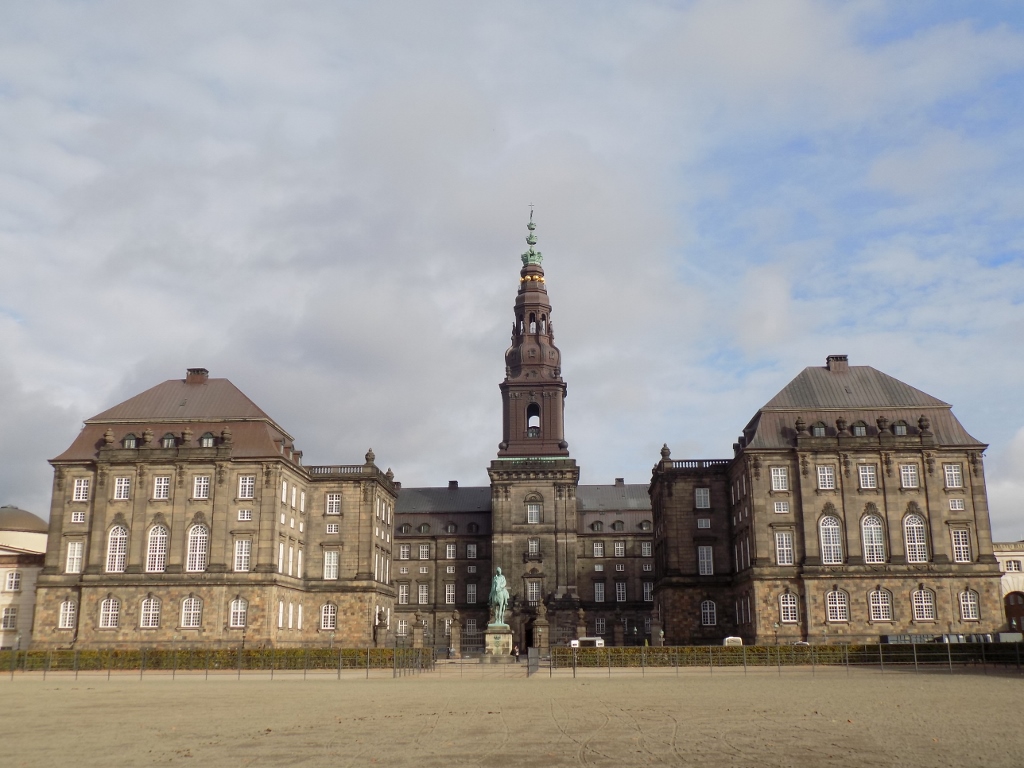 Christiansborg Palace
Christiansborg Palace
It was Sunday and there were few people and activities around, but my eye caught a parking lot for bicycles that is located by a lateral side of the palace. As I’ve said, the Danes love riding bicycles and they do it seriously and very regularly.
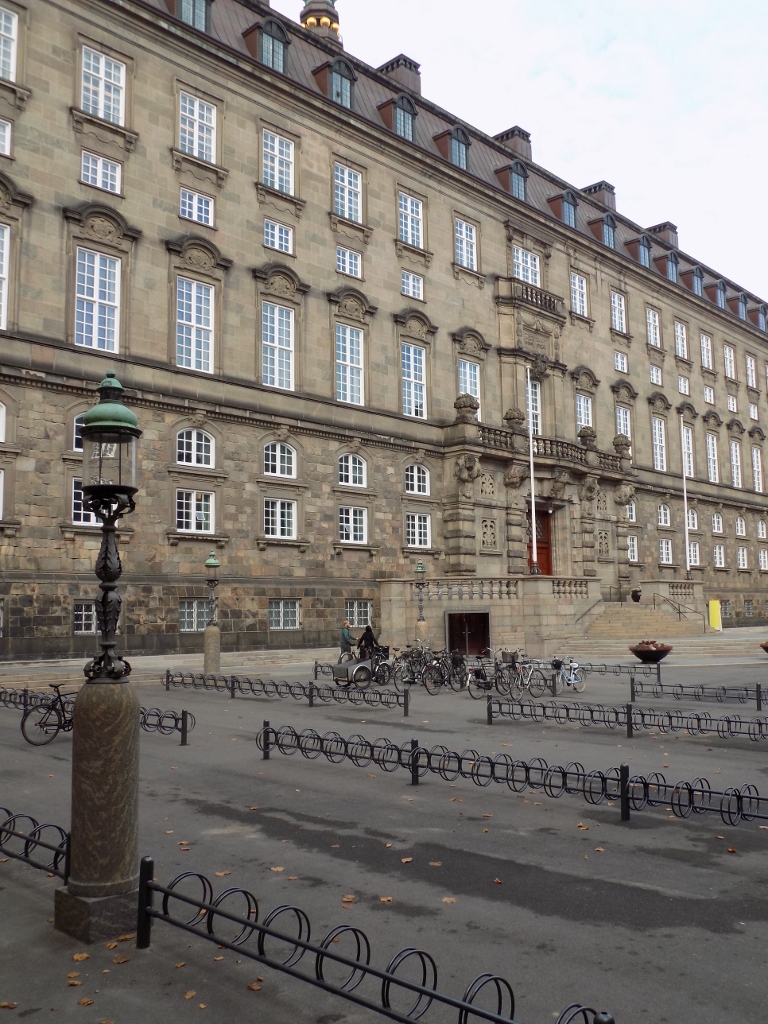 Bicycle parking lot by Christiansborg Palace
Bicycle parking lot by Christiansborg Palace
On the island of Slotsholmen there is also the building of the Stock Exchange which is famous for its very interesting tower the elongated top of which, 56 metres high, is made in the shape of the tails of four dragons that twist spirally one around the other.
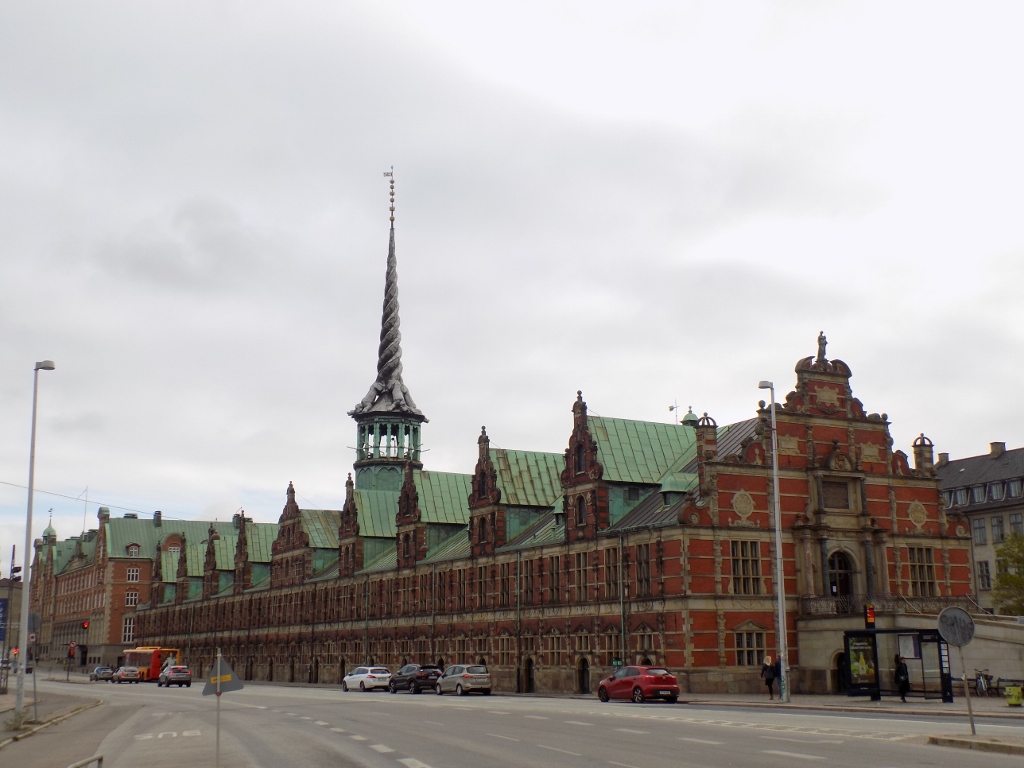 The building of the Stock Exchange in Copenhagen
The building of the Stock Exchange in Copenhagen
From here it is not far to get to the monument to Bishop Absalon who founded Copenhagen in 1167 and I thought it was quite appropriate to go to see it again, since it was a nice, symbolic way to finish my sightseeing.
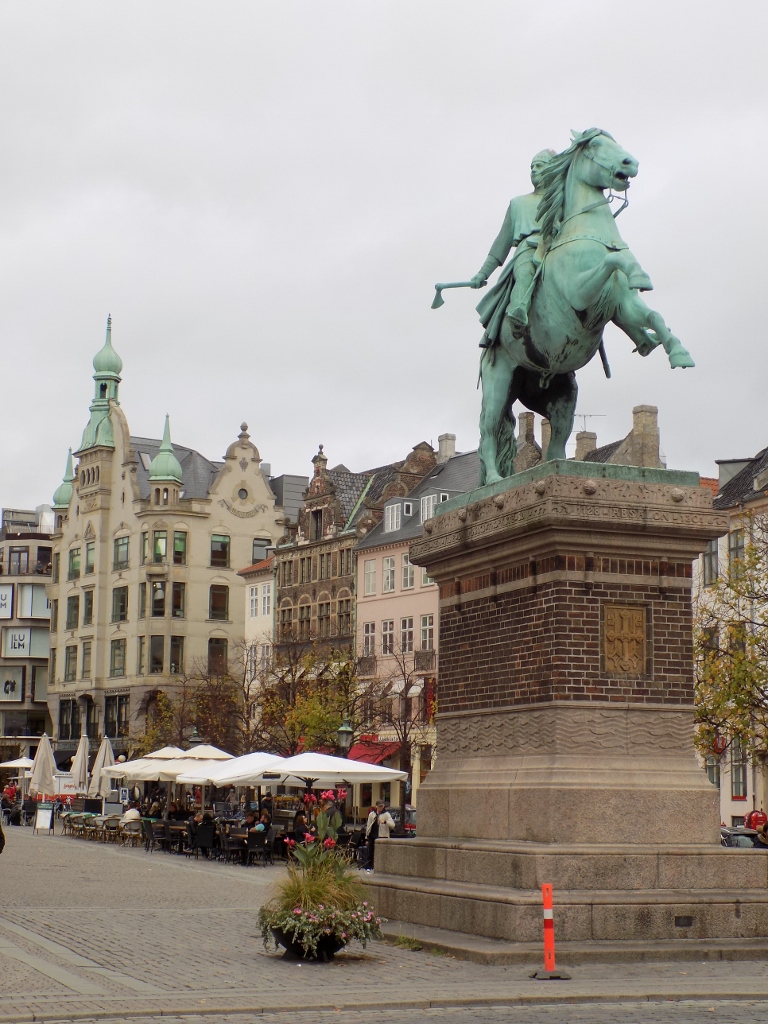 Monument to Bishop Absalon
Monument to Bishop Absalon
After this, I went slowly back to the flat, since I had to pack up and go to the airport a little later in order to catch a flight back home.
During this relatively short stay in Denmark I did run around the country a bit. As much as I could and as much as the time allowed me. Although there are still many other things to see in this European part of the country (here I’m thinking of the fact that Greenland, the biggest island on the Earth, which is geographically certainly closer to North America, belongs to Denmark), I was glad that I made a rather diverse selection of the destinations I went to: the capital, smaller towns, palaces, churches and monasteries, castles, nature, as well as places linked to the industrial part of the country. There was a lot of history, but also literature, some originally Danish, some English or in English (Karen Blixen wrote her pieces first in English and then worked them out in Danish), which with time surpassed their local roots becoming important for the entire planet.
Very often, in those different surveys on the “happiness index,” the Danes appear as a nation with a very high ranking. Cruising around this country during nine days, I looked around me and often thought of this. What really caught my eye was the cleanliness – it is not possible to see even a small piece of paper, let alone a cigarette bud or a plastic bottle, especially in smaller towns. And yet, I did not get an impression that they were “militant” about this. Also, the transportation functions well and yet there are places with no information, although it should be there (e.g., some electronic screens with information I saw on some railway stations did not work), so I had to ask people working in the shops at the stations (!) since there was nobody else there. I also saw in several places maps of the given town, displayed for the public and visitors, that had in the list of the captions the sign marking “You are here” and yet that sign was nowhere to be seen on the map itself, making it therefore almost unusable. Or, for instance, not only an inter-city coach arrived once at the destination 10 minutes ahead of the time (this was the first time this had ever happened to me), but also after this it happened that the driver ascertained that all the passengers were there, then he left almost 15 minutes earlier and arrived at the destination almost 20 minutes ahead of the time!
So, I did not get an impression that the people in Denmark are slaves to extreme organisation or order, as one may think, for instance, in Germany or Switzerland (no criticism, just an observation). And perhaps it is in all of this that the key to success of the Danes when it comes to the happiness index lies. They are undoubtedly a highly industrialised country, very well economically developed, wealthy, successful, everything less developed or less happy countries dream of, and yet in all of this they have managed to stay relaxed. It would be wise to learn from them.